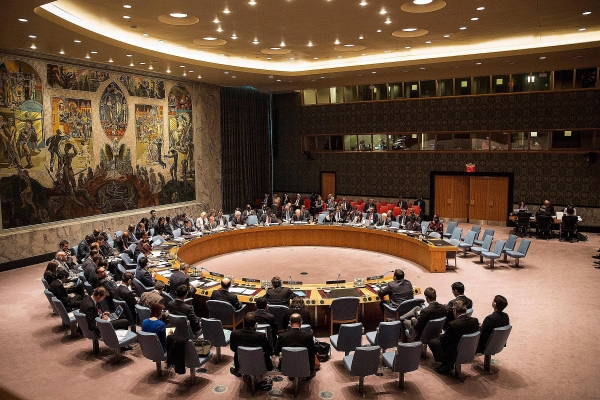Despite its authority under the article 34 of the UN Charter to become involved in an early stage in a dispute, the Security Council has rarely engaged in emerging conflicts. However, earlier Security Council engagement including interactive dialogues in informal formats and visits to turbulent areas would be important in addressing emerging threats.
Even if the UN Security Council was involved directly in crisis diplomacy, such as it was in the Balkans in 1940s or in Timor Est in 1990s, Burundi, South Sudan and DRC, it is often described as paralysed, incapable of identifying a common strategy and acting rapidly. Because of the lack of an effective institutional mechanism, the 2015 High-level Independent Panel on Peace Operations (HIPPO) suggested introducing changes in its working methods and operating procedures for direct preventive actions. As the International Crisis Group has observed, this lack of action has fed the so- called framework diplomacy, and as a consequence there has been a greater involvement of new powers, regional organizations and non-governmental actors. In fact, , regional organizations and ad hoc coalitions have often demonstrated their capabilities in recent crises, such as in South Sudan.
The council is not always the best mechanism for preventive diplomacy or conflict resolution since it is not easy to address the social and economic sources of conflicts. Theoretically, the five permanent members and the other ten on rotation should possess the political weight and the diplomatic tools to dialogue and persuade the actors involved in the crisis. This is not always realistic, as the members could be more interested in diplomatic fights over resolutions and statements than in confrontations with the actors and finding out the right diplomatic strategy.
The Security Council has adopted several ways to engage directly in crisis diplomacy and prevention since its birth.In early years, UN prevention and peace observation was achieved through joint operational effort by both the Council members and the UN Staff. Lately, owing to the Cold War, the work inside the Council was frequently characterized by the contrasting relationships between the URSS on one side, and the USA and the European Countries on the other. Slowly, the Security Council and the General Assembly gave more operational responsibilities for conflict management to the Secretariat and the Secretary-General. At the end of the Cold War, there was a reborn interest of the Council in crisis, UN mediations and peace operations. Moreover, there was also greater activity carried out by the Group of Friends, a mix of countries inside or outside the Council, whose aim was to influence the Security Council’s actions concerning the engagement in particular countries (such as in 1999 during the independence of East Timor with the involvement of important ambassadors).
From the 2000s, the Council has launched several missions a year (from one to four) and have undertaken regular visits to certain countries, such as the DRC and Haiti, to control the progresses in the country and have direct contact with the local political leaders over fundamental issues.
The HIPPO Report highlighted the weakness of the UN System in information-gathering and analysis. This lack of information has negative consequences on Security Council’s capability of paying attention to any kind of rising threat that could affect the maintenance of international peace and security. This is the reason why in 2010 the United Kingdom proposed the creation of the UN Department of Political Affairs to inform the Council monthly over potential threats. This proposal was not supported, as many countries feared their own interests could have been affected. The Office for the High Commissioner for Human Rights is based in New York to focus the Council’s actions on urgent issues. During its presidency, New Zealand introduced a new mechanism allowing the UN officials to offer informal advice on issues of immediate concern.
The Council is also not well designed to discuss long-term challenges, like climate change and demographic shifts.As the Council is not well prepared to engage in operational prevention, it should focus on the political, normative and legal functions of its role as an arbiter of international peace and security issues. Consequently, it should make its field missions more effective, which have in the past not assured long-term results, and devolve crisis diplomacy to UN officials, diplomats and concerned states.
The Council could improve its engagement by designating specific members to be sent on the ground and by encouraging existing instruments and organizations, such as the ad hoc working group on prevention in Africa, and experimenting with inter-governmental mechanisms for crisis response and peace implementation.
Concerning the early warnings and consultations, the Council could experiment three new formats:
- Long-term risk assessments of specific countries and regions
- Informal dialogues on non-country-specific “megatrends”
- “Good Offices” sessions
Concerning the diplomatic actions for prevention and peace implementation, the Council could:
- Streamline Council missions
- Bring back Good Offices committees and Council commissions
- Mix and match UN officials and Council representatives
To implement these innovations, the Council should:
- Create a new Working Group on Conflict Prevention
- Find ways to involve the Military Staff Committee and military advisers in conflict prevention
- Encourage states outside the Council to revitalize country-specific Groups of Friends
For more information, please read:
http://peaceoperationsreview.org/wp-content/uploads/2017/05/gowan_security_council_final.pdf







